
The Pahlavi Dynasty
H.I.M. Reza Shah
H.I.M. Reza Shah (the Great) Pahlavi (1878-1944) Founder of the Pahlavi Dynasty Reign 1925-1941
H.I.M. Mohammad Reza Shah Pahlavi (1919-1980) Reign 1941-1979
H.I.M. Crown Prince Reza Pahlavi Born October 31, 1960 Iran, (Persia) Tehran
Siblings
Princess Shahnaz Pahlavi half-sister, (born October 27, 1940) Princess Farahnaz Pahlavi (born 12 March 1963) Prince Ali-Reza Pahlavi (28 April 1966 – 4 January 2011) Princess Leila Pahlavi (27 March 1970 – 10 June 2001)
Spouse Yasmine Etemad-Amini (Born July 26, 1968) Issue Princess Noor Pahlavi (born April 3, 1992) Princess Iman Pahlavi (born September 12, 1993) Princess Farah Pahlavi (born January 17, 2004) [1]
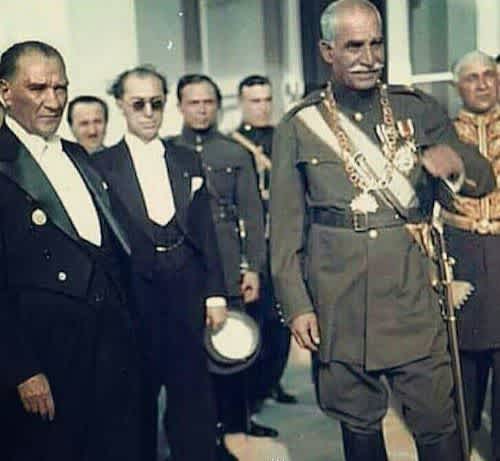
Reza Shah Pahlavi, the founder of the Pahlavi Dynasty, embarked on a comprehensive plan to reorganize the executive and economic state of the country. When he ascended the throne from 1925 to 1941 A.D., Iran lacked an administrative system, a cohesive army, communication channels, and a modern banking and economic structure. During his rule, Reza Shah strived to modernize Iran and make it a progressive nation.
The country faced challenges, with various regions seeking to separate from Iran, requiring strong centralized power to address the irregularities.
In 1941 A.D., with the outbreak of World War II in Europe, the Middle East, including Iran, was not exempt from its impact.
On August 25, 1941, A.D., Soviet and British forces occupied Iran, with Tehran falling under their control. Consequently, Reza Shah Pahlavi was deposed and exiled to Mauritius. Later, he moved to Johannesburg, where he spent the remainder of his life, passing away on July 26, 1944, A.D.
Reza Shah's actions during his reign in Iran included
the establishment of a new army to safeguard the country's independence and integrity
Ensure public security
Maintain air force and navy presence in the Persian Gulf, Oman, and Caspian Seas
Set up Madrese-ye Nezam (a military academy) in Tehran, Kermanshah, and other cities, as well as an official college that sent students to study military tactics in European countries.
Implemented the law of the public service system across the nation
Reforms in culture and public education involved establishing innovative primary and secondary schools, founding Iran's first university known as the University of Tehran, Technical College, and the National Library.
An ambitious national railway project was undertaken, linking the Caspian Sea to the Persian Gulf, marking the construction of Iran's first railway.
Numerous outstanding students were sponsored by the government to study abroad and acquire new knowledge.
To advance aviation, the country's first aircraft factory was established through the purchase of German aviation licenses.
In 1939 A.D., the pivotal Mehrabad Airport was constructed, becoming a significant aviation hub in the country.
A vast network of communication roads was developed across various cities and regions, including the construction of the first road tunnel in Kandovan, the renowned Veresk Bridge, and the famous Chalus Road.
Communication and telecommunication means were expanded throughout the country, and a dedicated telecommunication faculty was established.
Measures were taken to ensure the security of cities and roads, confronting and suppressing bandits and insurgents.
It became mandatory for every Iranian to have a surname and identity cards were issued to ensure the uniqueness of each person. The General Office of Statistics and Civil Registration was established.
Initiating the first excavations at Persepolis, the ancient ceremonial capital.
The country's currency was transformed into Rials.
In 1935 A.D., Iran's official name in international forums changed from "Persia" to "Iran," along with the transition from the Lunar Hijri calendar to the Solar Hijri calendar.
A comprehensive law was established for the administrative divisions of the country, defining provinces, cities, and districts, as well as their powers and duties. Titles such as exarch, governor, prefect, and mayor became standardized.
Extensive reforms were implemented in tax affairs and the public budget, along with the regulation of the country's financial, banking, foreign exchange, and monetary affairs.
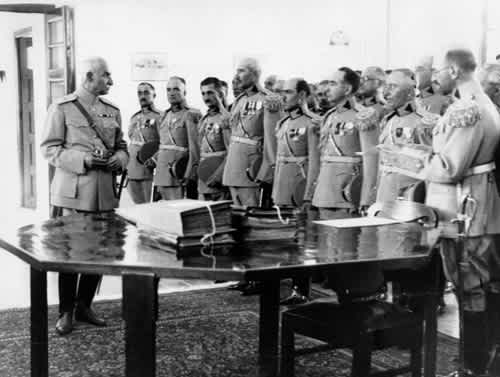
There were no Iranian banks initially, and money transactions were conducted through trading houses like Toumanians Trading House. Additionally, several foreign banks, such as the Royal Bank of England, the Russian Borrowing Bank, and the Ottoman Bank, operated in Iran. In 1925 A.D., the Sepah Bank was established to oversee the army's finances. Subsequently, Bank Melli Iran was opened in 1928 A.D., issuing the first series of Iranian banknotes in 1932 A.D. Following that, the Keshavarzi Bank was established in 1932 A.D., and the Rahni Bank started its operations in 1938 A.D.
A focus on enhancing the conditions of farmers.
Reformation of the judiciary in line with developed countries by enacting legal and criminal laws and procedures, while adhering to religious norms and European legal practices. This involved the involvement of seminary elites, graduates of domestic and foreign law schools, and the establishment of a judicial class.
Establishment of a real estate registry office, notary offices, and marriage and divorce offices to protect individuals' rights and ensure the accuracy of transactions
Improving municipal affairs, including street and square construction, the development of existing roads, strict and continuous supervision over tree planting, municipal waste management, construction of municipal buildings, and funding.
Ensuring religious minorities' freedom to practice their religious duties and rituals, granting them equal social rights as other Iranian citizens.
H.I.H. Mohammad Reza Shah
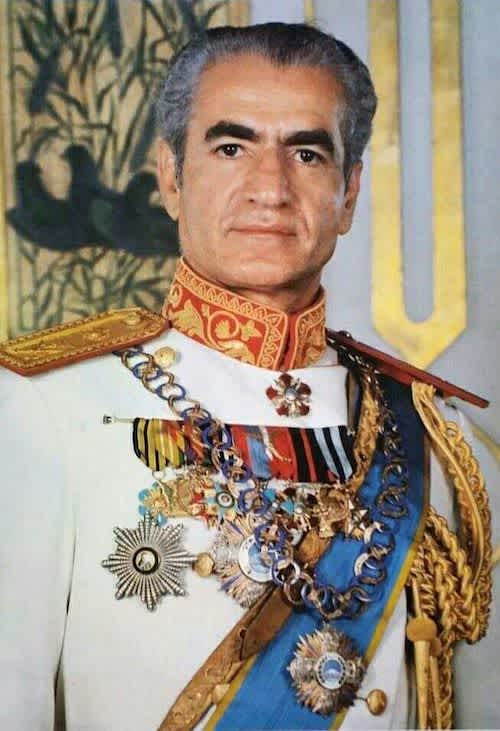
Following the exile of Reza Shah, the Pahlavi Dynasty saw the rise of his son, Mohammad Reza Shah.
Mohammad Reza Shah Pahlavi ascended the throne on 16 September 1941 A.D. He pursued his studies in Switzerland and later returned to Iran after achieving the rank of second lieutenant from the officer's college. Throughout his 37-year reign, Mohammad Reza Shah, like his father, made significant contributions to Iran.
Here are some of the accomplishments during Mohammad Reza Pahlavi's reign:
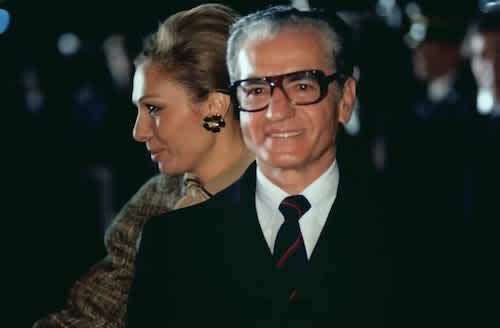
The construction of Shahyad Square and Tower, now known as Azadi Square and Tower, is an iconic symbol of Iran.
Development of the Olympic Village and Aria Mehr Sports Complex in Tehran, later known as Azadi Complex, to host the 1974 A.D. Asian Games. The complex features a 100,000-seat football stadium, a 12,000-seat hall, shooting ranges, a skating rink, a racetrack, a motorcycle track, and a lake for water sports, including a karting track. It also comprises five halls for basketball, volleyball, weightlifting, wrestling, and women's sports. Additionally, the complex includes tennis courts, a national football team camp, an equestrian complex, the Azadi pool, a cycling stadium, numerous football fields, a baseball field, cricket facilities, and the health road encircling the lake.
Establishment of Iran Airlines (Homa), the oldest airline in the Middle East.
Asserting Iran's national sovereignty and authority over the islands of Greater Tunb (Tonb-e Bozorg), Lesser Tunb (Tonb-e Kuchak), and Abu Musa in the Persian Gulf, along with the establishment of the Imperial Navy in the region.
Liberation of Azerbaijan and Kurdistan regions and suppression of Soviet-backed separatist groups within Iran.
Grand celebrations commemorating the 2500th anniversary of the Persian Empire, showcasing Iran's rich historical heritage and cultural significance on the international stage.
Implementation of the White Revolution and its 19 principles, including land reform and abolishing the landlord system in Iran, nationalization of forests, pastures, and water resources, workers' share in net profits of industrial factories, and the establishment of IRGC Health, Knowledge Corps, and Extension and Development Corps.
Introduction of free and compulsory education for all citizens.
Provision of free meals for young children in schools and free feeding for infants up to two years old along with their mothers.
Establishment of comprehensive public social insurance for all Iranians.
Creation of the Intellectual Development Center for Children and Adolescents to address the cultural needs of this age group in Iran.
Amendment of the Iranian election law to grant women the right to vote and equal political rights with men.
Change in the origin of Iran's history dating system, shifting from the solar Hijri to the beginning of the reign of Cyrus the Great.
Significant enhancement of the military power of the Iranian army, making it one of the most formidable and superior military forces in the Middle East and the world. A substantial budget was allocated for equipping and training the Imperial Iranian Army, including the acquisition of equipment from the United States and other countries.
The Royal Iranian Air Force also became a potent force during this period.
Founding OPEC (Oil Exporters Association) and taking the chairmanship position.
Establishment of several prominent universities, such as Aria Mehr University of Technology (now Sharif University of Technology), Tehran Polytechnic (now Amirkabir University of Technology), Aria Mehr University of Technology Isfahan (now Isfahan University of Technology), National University of Iran (now Shahid Beheshti University), Farah Pahlavi University (now Al-Zahra University), University Pahlavi (now Shiraz University), and Jundishapur University (now Shahid Chamran University). [2]
H.I.M. Crown Prince Reza Pahlavi
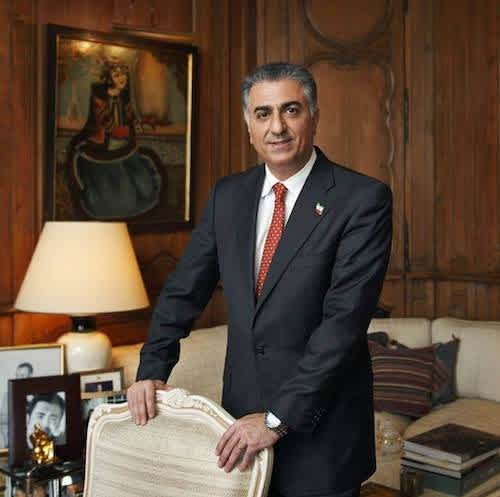
43 Years of Crown Prince Reza Pahlavi's Fight for Freedom and Democracy in Iran
For the past 43 years, Crown Prince Reza Pahlavi has been at the forefront of the struggle for freedom and the restoration of a democratic government in Iran. As the heir to the Pahlavi dynasty, which ruled Iran from 1925 to 1979, he carries the legacy of his father, Mohammad Reza Shah, who worked towards modernization and progress for Iran. However, following the Islamic Revolution in 1979, Iran witnessed a radical shift in its political landscape, leading to the establishment of the Islamic Republic. Since then, Crown Prince Reza Pahlavi has tirelessly campaigned for the rights of Iranians and the establishment of a democratic and inclusive government for the country.
The Journey of Struggle:
In the aftermath of the Islamic Revolution, Crown Prince Reza Pahlavi was forced into exile along with his family. Despite living abroad, he did not abandon his responsibility toward his homeland and the Iranian people. Instead, he became the symbol of resistance for millions of Iranians yearning for freedom and democracy. From his exile, he has relentlessly fought for the principles of liberty, justice, and human rights in Iran.
Engaging with the International Community:
Crown Prince Reza Pahlavi has been an active advocate for Iran on the international stage. He has tirelessly engaged with world leaders, policymakers, and international organizations to garner support for the Iranian people's aspirations for a democratic government. He has called for diplomatic solutions to address the challenges faced by Iran and has emphasized the importance of human rights and civil liberties.
Promoting a Unifying Vision:
Throughout his journey, Crown Prince Reza Pahlavi emphasized a vision of unity and inclusivity for Iran. He believes that a democratic government should respect the diversity of Iran's population and ensure equal rights and opportunities for all citizens, regardless of their religious, ethnic, or cultural backgrounds. His advocacy has been focused on fostering a sense of national cohesion and healing the divisions that have arisen since the Islamic Revolution.
Embracing Modernity and Progress:
As a modern-minded leader, Crown Prince Reza Pahlavi recognized the importance of embracing progress and modernity to create a prosperous Iran. He envisions a country that empowers its people through education, technological advancement, and economic opportunities. His ideas include promoting entrepreneurship, investing in education and healthcare, and supporting innovation to make Iran a leading force in the region and the world.
A Peaceful Transition to Democracy:
Crown Prince Reza Pahlavi has consistently advocated for a peaceful transition to democracy in Iran. He envisions a transparent electoral process that allows the Iranian people to choose their representatives freely and fairly. He believes that a democratic government will bring stability, prosperity, and lasting peace to the region.
Over the last 43 years, Crown Prince Reza Pahlavi has remained steadfast in his commitment to the Iranian people's aspirations for freedom and democracy. His vision for a united, modern, and democratic Iran has inspired countless Iranians both inside and outside the country. As the world watches the evolving situation in Iran, Crown Prince Reza Pahlavi continues to be a symbol of hope and a driving force behind the pursuit of a brighter future for Iran and its people.
Source:
[1] https://www.thepahlavidynasty.com/ [2] https://gopersis.com/pahlavi-dynasty/






